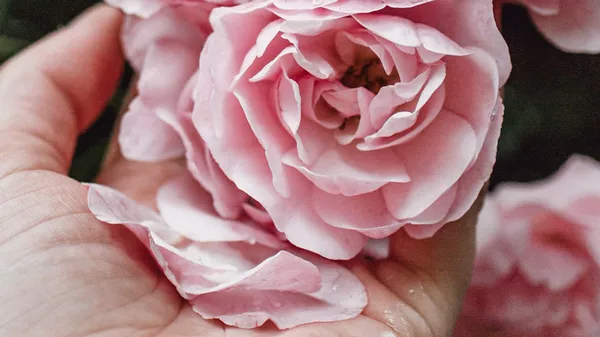Gardening enthusiasts often face challenges when it comes to maintaining their gardens, especially in areas where deer populations are prevalent. One of the primary concerns for gardeners is understanding which flowers are appealing to deer and, consequently, prone to being devoured. While deer are known for their browsing habits, not all flowers are equally attractive to them. In this article, we delve into the preferences of deer when it comes to flowers and provide insights into how gardeners can protect their blooms.
Understanding Deer Behavior:
Before delving into specific flower preferences, it’s essential to understand the behavior of deer concerning foraging. Deer are herbivores and primarily feed on vegetation, including leaves, twigs, fruits, and flowers. Their choice of food depends on various factors such as availability, seasonality, and plant species. Deer are selective feeders and often target plants based on their taste, smell, and nutritional content.
Deer have a keen sense of smell and taste, which helps them identify palatable food sources. Additionally, they exhibit browsing behavior, where they sample different plants before consuming them fully. This behavior allows them to assess the taste and texture of plants, helping them avoid toxic or unpleasant foods.
Deer Preferences in Flowers:
While deer may browse on a variety of plants, including shrubs and trees, certain flowers are more appealing to them due to their taste, scent, or nutritional value. Understanding which flowers deer prefer can help gardeners make informed choices when planning their gardens. Here are some flowers commonly favored by deer:
1. Hostas: Hostas are known for their lush foliage and attractive blooms, making them a popular choice for gardens. However, deer find hostas particularly appetizing, especially young shoots and tender leaves. Gardeners often find their hostas ravaged by deer, making them a challenging plant to grow in deer-prone areas.
2. Daylilies: Daylilies are prized for their vibrant flowers and low maintenance, making them a favorite among gardeners. However, deer are also fond of daylilies, particularly the buds and flowers. Gardeners may notice nibbled or missing blooms if deer frequent their gardens.
3. Tulips: Tulips add a splash of color to spring gardens, but they are also a delicacy for deer. Deer find tulip bulbs irresistible, often digging them up and consuming them before they have a chance to bloom. Protecting tulips from deer may require physical barriers or deterrents.
4. Roses: Roses are cherished for their beauty and fragrance, but they are not immune to deer damage. Deer may nibble on rose petals and leaves, especially in areas where natural food sources are scarce. Gardeners can protect their roses by using deer-resistant varieties or implementing deterrent measures.
5. Impatiens: Impatiens are popular annual flowers known for their bright blooms and shade tolerance. However, deer find impatiens foliage appetizing and may browse on them if other food sources are limited. Gardeners may need to use deer repellents or plant alternative species to deter deer.
6. Lilies: Lilies are prized for their elegant flowers and fragrance, but they are also attractive to deer. Deer may consume lily buds and flowers, causing damage to the plants. Gardeners can protect their lilies by planting them in deer-resistant gardens or using repellents.
7. Black-eyed Susans: Black-eyed Susans are cheerful wildflowers that add a pop of color to gardens. While they are drought-tolerant and easy to grow, they are not immune to deer browsing. Deer may feed on black-eyed Susan leaves and flowers, requiring protection measures in deer-prone areas.
Protecting Your Garden:
While deer may find certain flowers irresistible, there are several strategies gardeners can employ to protect their gardens:
1. Deer-resistant Plants: Choose flowers that are less palatable to deer, such as daffodils, foxgloves, and lavender. These plants contain compounds that deter deer from feeding on them.
2. Physical Barriers: Install fencing or netting around your garden to prevent deer from accessing your flowers. Choose fencing that is at least 8 feet tall, as deer are skilled jumpers.
3. Repellents: Use commercial deer repellents or homemade solutions to deter deer from feeding on your flowers. These repellents emit odors or tastes that are unpleasant to deer, discouraging them from browsing.
4. Scare Tactics: Install motion-activated devices such as sprinklers or noise-makers to startle deer and deter them from entering your garden.
5. Companion Planting: Surround your vulnerable flowers with deer-resistant plants or herbs that repel deer, such as sage, thyme, or rosemary.
6. Garden Design: Create gardens with mixed plantings and textures to make it less attractive to deer. Avoid planting large swaths of deer-favorite flowers in one area.
Conclusion
Understanding deer preferences in flowers is essential for gardeners looking to protect their blooms from browsing damage. By selecting deer-resistant plants, implementing physical barriers, using repellents, and employing other protection strategies, gardeners can enjoy beautiful gardens without worrying about deer damage. With careful planning and management, gardeners can coexist harmoniously with deer while maintaining thriving gardens.


